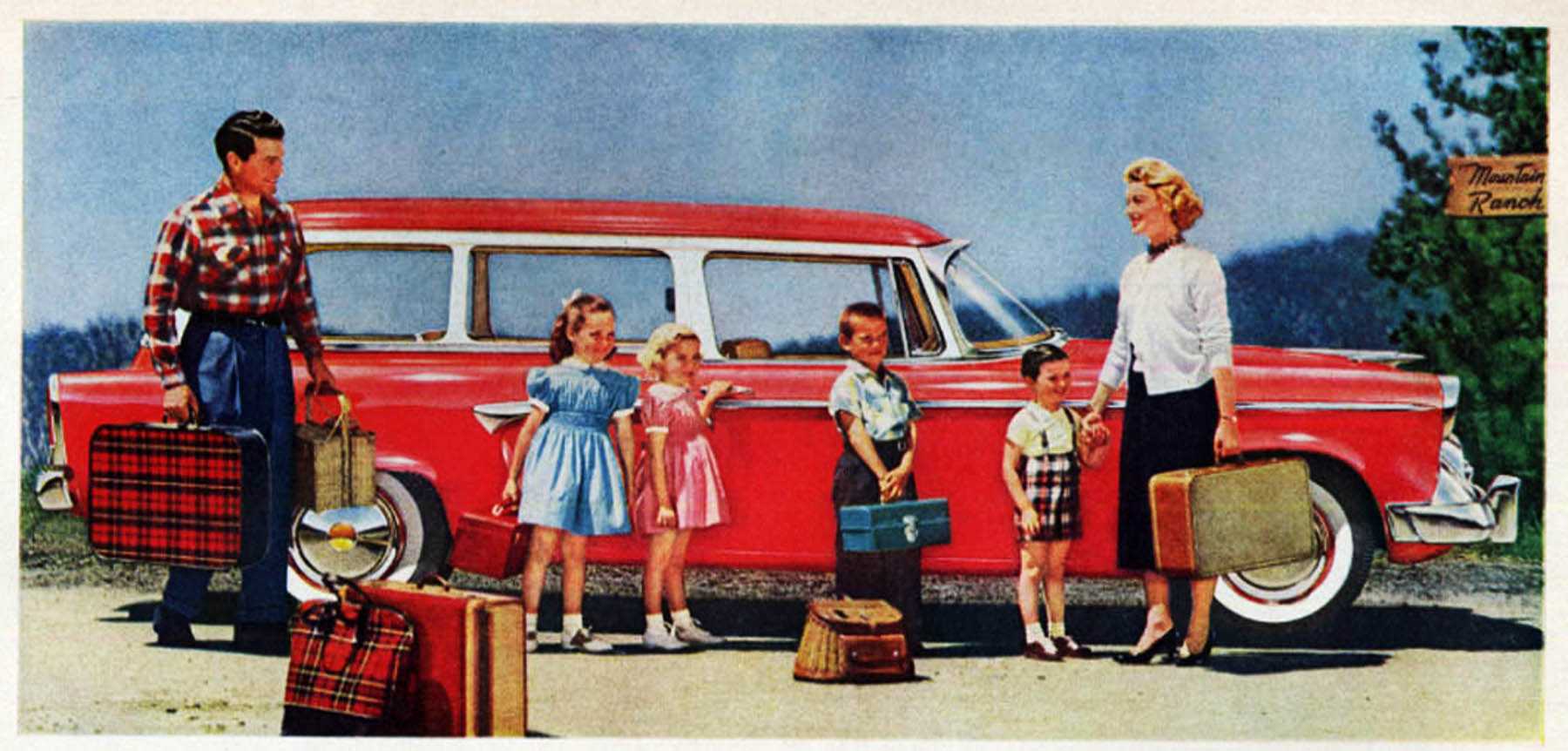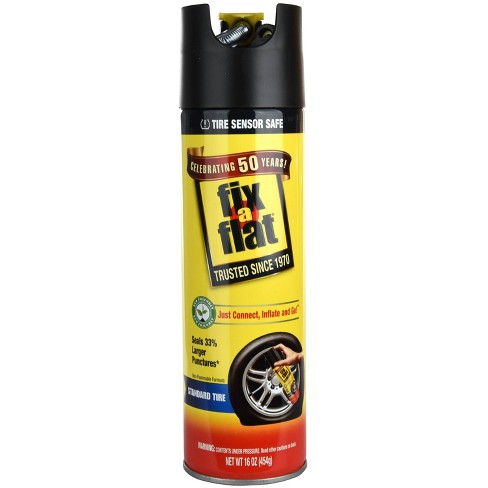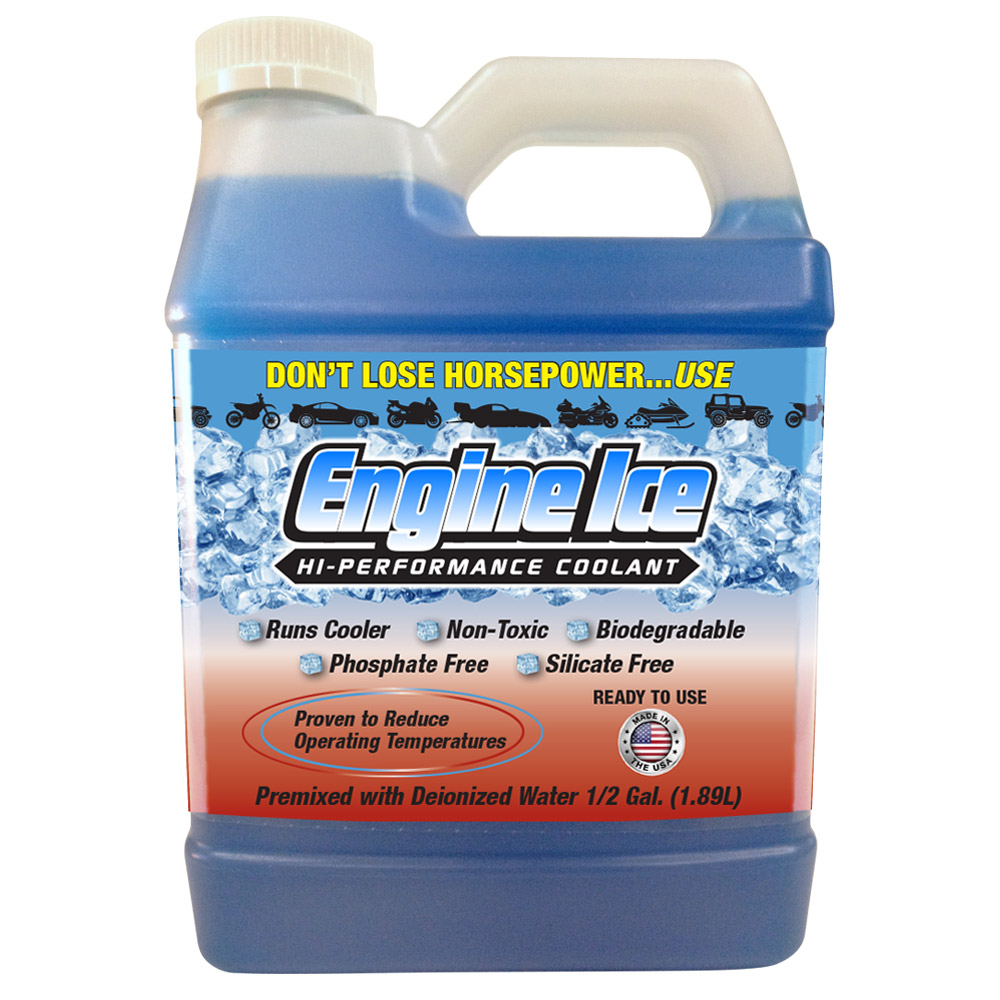
You’re right. No one does this stuff anymore. No one walks around their car and checks stuff out before hitting the road. Cars and crossovers have gotten so reliable that the odds of a serious breakdown occurring during your 1500-mile vacation drive are very low. Still, bad stuff does occasionally, though rarely, happen.
Per Quora.com, adventurous road-trippers will often attempt daily drives of 500-1000 miles in order to reach their chosen holiday destinations. Compare that figure to the roughly 29 miles per day Americans otherwise average on a daily basis. That means that you are approximately 15-30 times more likely to suffer from a vehicular failure of some sort each holiday-travel day than you are when driving around locally. And–and this is key–the odds of you being convenient to a repair facility while on vacation are likely reduced as well.
We’ve updated a list published by Consumer Guide back in the Seventies. Really, the Seventies. The original text below is followed by our updated thoughts on the item in blue. Here’s the checklist:
More car-safety info
Road Trip Safety Checklist
Steering Play
Steering play should be less than on-half inch when the steering wheel is rocked back and forth. Looseness indicates worn tie-rod ends or excessive play in the steering gear.
Update: Don’t bother. Thanks to electric power steering, there is no direct connection between the steering wheel and the wheels that steer anymore. That said, if your vehicle pulls to one side or the other while you drive, consider getting a wheel alignment before your trip. A proper alignment can extend tire life and reduce road fatigue.
How Tire Sizes Work
Brake pedal
The brake pedal should feel firm and travel no more than a few inches. A low pedal indicates worn brake linings or low fluid. A spongy pedal may mean a worn master cylinder or air in the brake lines.
Update: Don’t trust braking effectiveness to a simple pedal test. If your brakes feel anything but perfect, visit a mechanic immediately. Also, it’s a good idea to get an oil change before a long drive. While you’re at the shop, be sure the technician checks your brake fluid level.
Classic Car Ads: Safety
 Replacement Wiper Blades
Replacement Wiper BladesEmergency brake
The emergency brake should lock the rear wheels and be able to hold the car on a slight incline or prevent it from moving when the transmission is put into gear. The rear wheels should turn freely once the brake is released.
Update: When was the last time you used your emergency brake? Regardless, it can’t hurt to make sure brake is working.
Starting, Stopping, and Squealing: Testing Tires the Fun Way
Horn
A safety item that should be checked frequently.
Update: Given how many people now play with their phones while stopped an intersection, we’re pretty sure you already know whether or not your horn is working.
How to Check Your Tire Pressure
Windshield wipers
The wipers should work at all speeds and should clean windows without leaving streaks. Replace blades if rotted, cracked, or pitted.
Update: Replacement blades aren’t very expensive. Play it safe and just buy new ones before a long trip. Most quick-lube stores sell replacement blades.
Cold Snap: Why Your Tire Pressure Warning Light Is On
Windshield washers
The washers should squirt both sides of the windshield when activated.
Update: Yes they should. Thought: Stow a bottle of washer fluid in the trunk or cargo hold. Just in case.
Maintaining Your Car During The Shutdown
Mirrors
Inside and outside mirrors should be clear and unobstructed.
Update: Yes, they should.
Can My Car’s Cabin Filtration System Stop the Coronavirus?
 Tire Sealant
Tire SealantDefroster
Warm air should blow onto the windshield when the defrosters are turn on. Rear window electric defoggers should make the glass feel warm to the touch.
Update: Sounds like solid info. But, you knew that.
Historically Helpful: How To Push-Start Your Car*
Spare tire and jack
A spare tire and complete jack should be in the trunk. Check the condition and tire pressure of the spare. (Note: Some temporary spares are stored uninflated—make sure there is a pressure can to inflate it.) Check to see that all the pieces for the jack are there, and that the jack works. There should also be a lug wrench for the wheels. Better to discover a problem now than after a blowout or flat.
Update: Whoa, this is some dated text. Few cars are still equipped with spare tires anymore, with owners relying instead on fix-a-flat-style spray-can sealant instead. Before you head out on your trip, be sure your car is equipped with a spare, or spray-can sealant. It wouldn’t hurt to purchase as extra can of tire sealant, just in case.
Historically Helpful: A Car-Care Quiz From 1959
Fluid levels
Fluid levels should be maintained between the “full” and “add” marks. Engine oil should be checked with the engine off, after waiting several minutes for the oil to drain back into the crankcase. Automatic transmission fluid should be checked hot with the engine idling in park or neutral. Coolant level should be checked when the engine is cold and off.
Update: Again, get an oil change before your trip, and be sure the technician checks all of the above mentioned fluids. Most quick-change facilities check all of these fluids as part of their basic service.
Extra Credit: Consumer Guide Goes to Teen Defensive-Driving School
Air filter
The air filter should not restrict airflow. A clogged or damaged filter should be replaced immediately.
Update: Totally legit. A replacement air filter typically costs around $20, but can save you that much in short order by improving fuel economy. Again, this can be handled at a quick-lube shop.
Are You Changing Your Oil Too Often?
 Engine Coolant
Engine CoolantV-belts
Check drive belts for looseness, fraying, broken strands, serious cracks, or glazing. Drive belts should be tight enough to prevent slippage but not so tight as to put undue strain on the belt or pulley bearings.
Update: Most engines today make use of a single belt which generally lasts for the life of the vehicle. Unless you hear a squeaking noise coming from under the hood, I wouldn’t sweat this one.
Why Your Headlamps are Clouding Up
Radiator hoses
Inspect hoses for cracks or age hardening by squeezing them. Hoses should feel soft and pliable, not hard and brittle. Also check hose connections and clamps for looseness or leaks.
Heater hoses
Same as radiator hoses. Also check for rubbing against sharp objects or hot exhaust manifolds. Replace any damaged hoses.
Update: Hoses, once the scourge of long road trips, really don’t fail much anymore. If you’re having your car properly serviced, the hoses were likely inspected when last you had your coolant changed. This isn’t much of an issues anymore.
3 Easy Ways to Prepare Your Car for Winter
PCV valve and hose
Check the PCV valve and hose with the engine running, by pulling the valve out of its housing and holding your thumb over the open end. You should feel a strong vacuum. Also, the valve should rattle when shaken (turn the engine off first.)
Update: While many vehicles still feature PCV valves, they don’t fail with any regularity. Also, on the off chance your PCV valve does act up, it’s unlikely to do much more than make your car run a little rough.
Dogs in Cars: How Best to Keep Your Pup Safe
Vacuum hoses
Vacuum hoses should be tight and free from cracks, kinks, or burn spots. Hose routing can be checked against the emissions decal under the hood.
Update: Remember carburetors? No? Well, don’t worry, you’re car doesn’t have one, nor does it have a bunch of related failure-prone vacuum hoses either.
Why Your Windshield Washer Fluid Froze
Distributor cap
The cap should be free from cracks or other signs of electrical arcing or deterioration. Inside, it should be clean and dry, and the terminal contacts in good condition.
Update: We told you this list was old. Nothing to see here, move along…
Surviving the Polar Vortex: Winter Driving Tips
Spark plug wires
Terminals should fit into the distributor cap tightly, and boots should fit around the spark plugs snugly. The wires must be free of visible damage, chafing or burn spots. Arcing is most easily detected by observing the plug wires while the engine is running outdoors after dark.
Update: Excellent advice if you’re planning on making the trip in your Dodge Polara. Plug wires went completely extinct more than 20 years ago.
Why I Dislike Auto-Dimming Mirrors
Battery terminals
The terminals and cables should be tight and free from corrosion.
Update: This is solid advice. Also, if your battery is more than three years old, consider replacing it before your trip.
Before There Were Child Seats . . .
Headlights
Check both high and low beams. Aiming can be checked by parking about 20 feet from a wall or garage door and noting the light pattern. Both headlights should be aimed level and straight ahead.
Update: Can’t hurt to check. Plus…
Taillights: Check to see that all taillights work when the lights are on.
Brake lights: The brake lights should operate when the brake pedal is depressed.
Turn signals: Check both left and right, front and rear turn signals by working the turn signal switch with the ignition on.
License plate light: An often overlooked item that should come on with the headlights.
Backup lights: They should come on when the transmission is put into reverse.
Update: Ditto.
Attention, Tailgaters: Get Off My Back!
Tire inflation
Check tire pressures when the tires are cold. Both front tires should have equal pressure, as should both rear tires.
Update: Always a good idea to check your tire inflation. If you don’t want to do this yourself, make sure the quick-lube guy does it for you.
My No. 1 Pet Peeve: Visibility
Tire conditions
Look at the tread and note if there is uneven wear or cupping that may indicate misalignment or worn suspension parts. Check the sidewalls for bulges, cracking, or other damage.
Update: Sage advice.
Forgotten Concept: Ford Mustang RSX
Fluid leaks
Check underneath for any fluids that may be leaking from the vehicle. Damp, smelly spots under the rear of the vehicle may indicate a gas leak from the fuel tank or fuel line. Dark brown or black oily spots near the back could be differential oil leaking from the rear axle on rear-wheel-drive cars. Yellow, brown, or black oily spots under the front of your car point to engine oil leaks, or possibly transaxle oil leaks on front-wheel-drive cars. Red oily spots under the middle of rear-wheel-drive cars may be automatic transmission fluid. The same in the front front-wheel drive would mean a leaky transaxle. Green, blue, or clear wet spots may be due to coolant leaking from the radiator, a bad hose connection, the water pump, or a freeze plug on the engine.
Update: If you find any fluid puddles on the ground where your car is usually parked, have a mechanic have a look. Also, take a picture of the puddle for the mechanic.
Five Great Car Logos—For Tattoos
Shock absorbers/struts
The condition of the shocks/struts can be checked by doing a bounce test. Rock each corner of the car several times and then let go. A good shock/strut should stop the bouncing after one or two rebounds. Fluid leaks on shocks indicate replacement is in order; a small amount of seepage is normal on some types of struts. The mounts should be checked for wear or looseness.
Update: Unless you need the exercise, we think you can skip this test.
Plug-in Perspective: Electric Pickup Trucks in Profile
Summary
There really isn’t that much most folks can do themselves to prepare a car for a long trip these days. We recommend, bare minimum, taking your car for an oil change before your journey, and making sure the technician checks everything that is normally inspected during a routine oil change. And, if your battery or tires are old, considering replacing them before hitting the road. Safe travels!
Follow Tom on Twitter
Car Stuff Podcast




